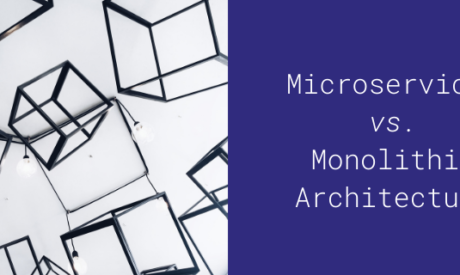Application Modernization
Overview
As technology advances at an unprecedented pace, it’s crucial for businesses to keep pace by modernizing their applications. Application modernization involves updating legacy applications to more efficient, agile systems that can operate in the cloud, on-premises, or in hybrid environments.
What is Application Modernization?

Application Modernization is the process of updating legacy applications to more efficient, agile systems that are better suited for current business needs, technological trends, and user expectations. This involves enhancing functionality, improving performance, security, and scalability, as well as adapting applications to run on newer platforms, such as cloud or mobile devices. Modernization can also involve integrating applications with new technologies and architectures, such as microservices and containerization, to improve flexibility, scalability, and cost-effectiveness. By modernizing their applications, businesses can reduce technical debt, improve productivity, enhance customer experience, and gain a competitive advantage in their respective markets.
“Application Modernization Services Market Estimated to Hit USD 24.8 Billion by 2030“ – Market Research Future (2022)
Application Modernization Benefits
Application modernization offers numerous benefits and features that can help organizations improve their operations, reduce costs, and enhance their competitive advantage. Some of the key benefits and features of application modernization include:
Application Modernization Features
-
Flexible
More flexible and adaptable applications
-
Capable
Better handling of larger workloads and more users
-
Secure
Built-in security features to protect against cyber threats and data breaches
-
Powerful
Faster and more efficient performance, reducing downtime and errors
-
Budget Friendly
Reduced maintenance costs, licensing fees, and hardware expenses
-
UX Haven
Intuitive interfaces, faster response times, and greater accessibility for better user experience
-
Innovation and Creativity hub
Ability to experiment with new technologies and approaches, fostering innovation and creativity
Built for Speed: Microservices in Application Modernization
Microservices is a software architecture style that is often used as a key component of application modernization efforts. Microservices involve breaking down large, monolithic applications into smaller, more modular services that can be developed, deployed, and scaled independently. Each microservice performs a specific function or business capability, and communicates with other microservices through standardized APIs.

More on Application Modernization
Companies all around have utilized more archaic architecture and attempted inter-app connectivity, which worked for the time when it was appropriate for the market’s need. Nowadays, we help implementing Integration Modernization activities to our clients, bringing forth all the benefits of Microservices and Containers merged together with all the benefits and use cases of modernized Middleware and Agile Integration. To learn more about all the forms of integration we implement, please feel free to browse through them below.
Featured eBook
Microservices
 Time-To-Market Driven Disruption
Time-To-Market Driven Disruption
The proud result of toil and hard work, this eBook sheds light on how cross-organizational cooperation and partnerships can break limits and create new ideals suitable for the modern market. Download the eBook now and see how we at Sumerge can utilize Microservices within Application Modernization to help you achieve your business’ goals.
Application Modernization Consultation
Book Your Free Session
Sumerge team and partner platforms use new-age technologies that include platform-as-a-service (Paas), microservices, and serverless architectures to provide software transformation solutions to enhance your ROI. We create a comprehensive business case and define the microservices transformation roadmap and operating model. Then we build cloud native applications. Our team will re-architect and re-design monolithic applications with microservices, build and test services, perform platform migrations, and build your DevOps culture and environment.
You May Also Be Interested In

Why should you adopt Red Hat OpenShift for Microservices?
- Posted by Adham Jan
- On September 14, 2021
In the age of Modernization and Digitization the move away from Monolithic Architecture has been well underway, with exponentially increasing adoption worldwide...

Microservices Adoption – Key for Banks’ Survival
- Posted by Adham Jan
- On May 27, 2021
With the strategic objective of banks being to deliver a unique customer experience, digital transformation has become a key topic in the...

Microservices vs. Monolithic Architecture
- Posted by Adham Jan
- On November 16, 2020
When you hear the term “Microservices,” you often hear it in conjunction with the word “Monolithic,” when talking about software design. You...



 Time-To-Market Driven Disruption
Time-To-Market Driven Disruption